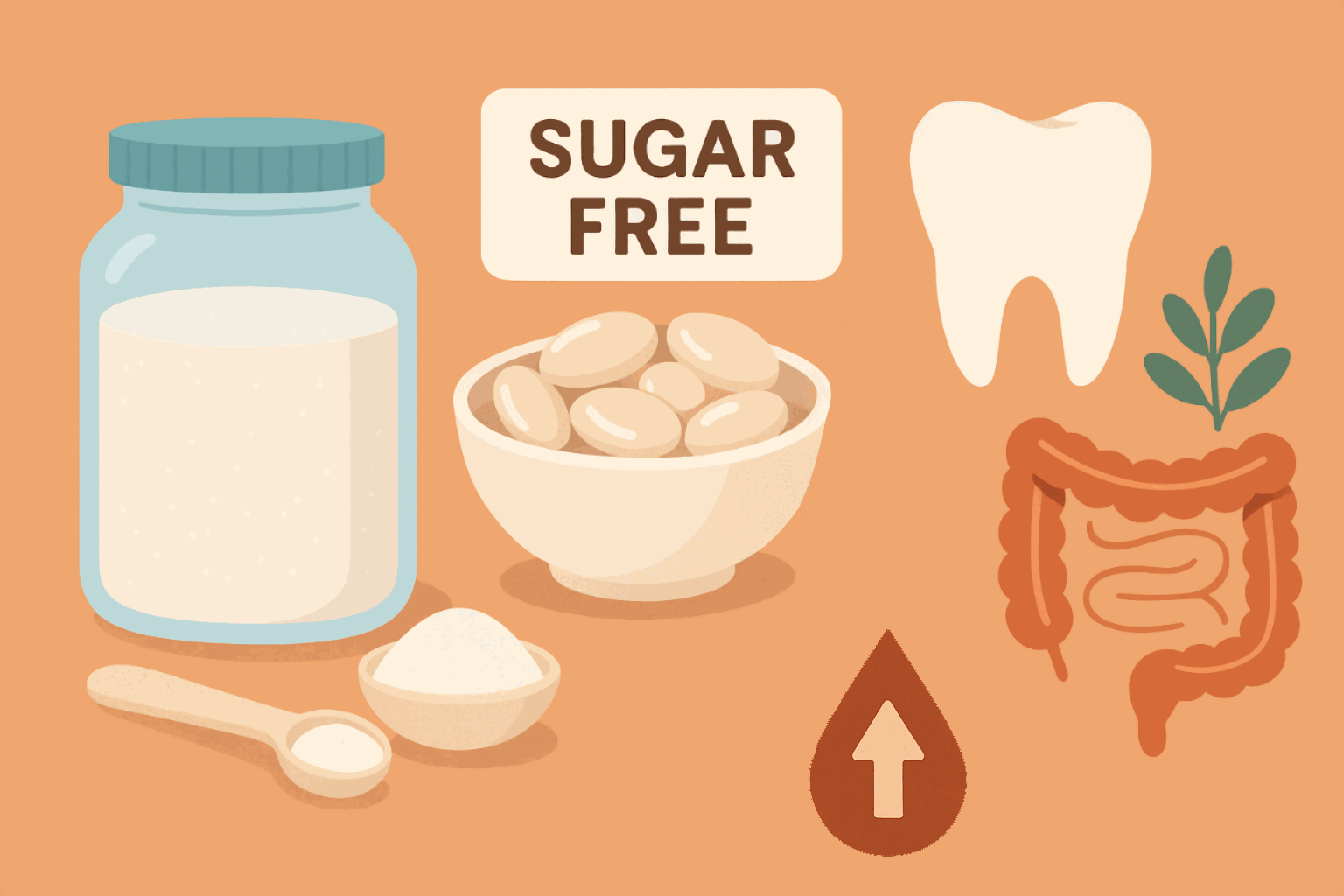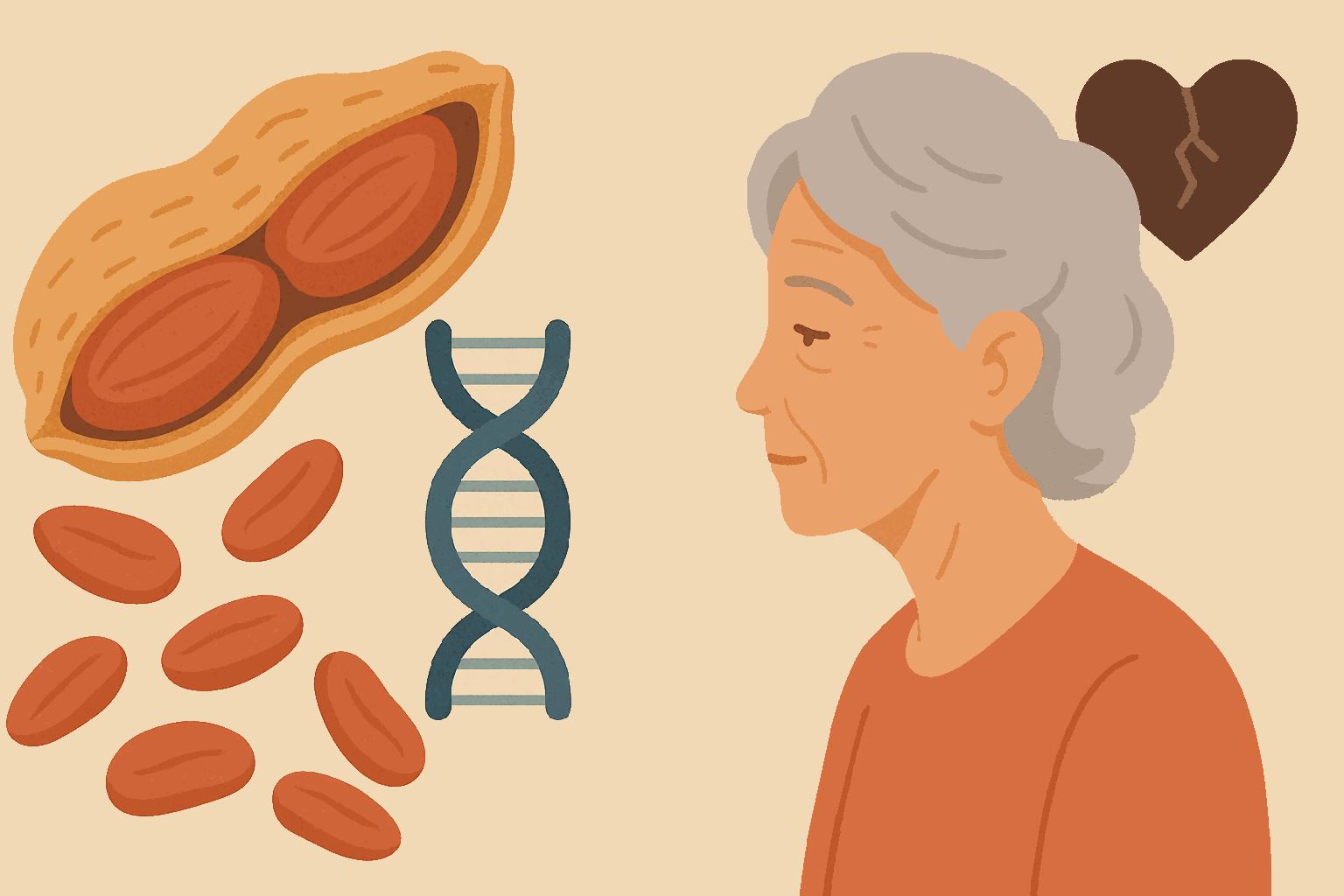
Maltitol: The Sweet Truth About This Sugar Substitute
Table of Contents
What is Maltitol?
In the quest for healthier lifestyles and reduced sugar intake, many people turn to sugar substitutes. One popular option found in countless “sugar-free” products is maltitol. But what exactly is it, and is it a good choice? This article explores maltitol, grounded in science, common sense, and evidence-based medicine. Maltitol belongs to a family of sweeteners called polyols, also known as sugar alcohols. It’s produced commercially by hydrogenating maltose, which is derived from starch.
Here are some of its key characteristics:
- Sweetness: It provides about 75-90% of the sweetness of regular table sugar (sucrose).
- Taste: Many find its taste profile remarkably similar to sugar, without a significant aftertaste, making it a favorite among food manufacturers.
- Bulk and Texture: Like sugar, it adds volume and texture to foods, crucial for products like sugar-free candies, chocolates, and baked goods.
- Lower Calories: Maltitol provides fewer calories than sugar (around
2.1calories per gram compared to sugar’s4calories per gram) because it’s incompletely absorbed by the body. - Properties: It dissolves well in water and is thermally stable, holding up well during cooking and baking processes.
Is Maltitol Safe?
Regulatory bodies worldwide have evaluated maltitol’s safety.
- General Recognition: It is recognized as safe for consumption by regulatory agencies like the Joint FAO/WHO Expert Committee on Food Additives (JECFA), which has assigned it an “Acceptable Daily Intake (ADI) not specified.” This designation is used for substances of very low toxicity.
- Pregnancy Considerations: While generally safe, excessive consumption of any polyol, including maltitol, can lead to gastrointestinal discomfort (more on that below). The original article mentioned a specific concern about fetal weight loss with high doses (>50g/day). While excessive intake of anything leading to maternal gastrointestinal issues or reduced overall nutritional intake could potentially affect pregnancy outcomes, specific warnings about maltitol directly causing fetal weight loss at such doses require stronger, specific evidence. Pregnant individuals should consume polyols in moderation and consult their healthcare provider for personalized dietary advice.
Health Benefits of Maltitol
Beyond simply replacing sugar, maltitol offers several potential health advantages:
1. Blood Sugar Management
Maltitol has a significantly lower glycemic index (GI) than sugar, estimated to be around 35 (compared to sucrose’s GI of about 65).
- Mechanism: It’s absorbed more slowly and incompletely from the small intestine. This results in a much smaller rise in blood glucose and insulin levels compared to sugar. Source
- Application: This makes maltitol a potentially useful sweetener for individuals managing diabetes or impaired glucose tolerance, helping to reduce the overall glycemic load of their diet. However, it’s crucial to remember it does still impact blood sugar (unlike non-caloric sweeteners) and should be accounted for in diabetes management plans, ideally under guidance from a healthcare professional or registered dietitian.
2. Oral Health Champion
Maltitol is considered non-cariogenic, meaning it doesn’t contribute to tooth decay.
- Mechanism: Oral bacteria, particularly cavity-causing culprits like Streptococcus mutans and Streptococcus sobrinus, cannot easily metabolize maltitol to produce the acids that erode tooth enamel. Source
- Application: Regular use of products sweetened solely with maltitol, such as sugar-free chewing gum and lollipops, can contribute positively to oral hygiene by reducing exposure to decay-promoting sugars.
3. Gut Health and Prebiotic Potential
The portion of maltitol that isn’t absorbed in the small intestine travels to the large intestine, where it interacts with gut microbiota.
- Fermentation: Gut bacteria can ferment maltitol. While some research suggests maltitol doesn’t cause major shifts in the overall gut microbiota profile Source, other evidence indicates it may act as a moderate prebiotic.
- Beneficial Bacteria: It might selectively promote the growth of beneficial bacteria, such as Bifidobacteria and Lactobacilli. These bacteria are known for their positive roles in gut health, including producing beneficial short-chain fatty acids.
Understanding Tolerance and Side Effects
The incomplete absorption that underlies some of maltitol’s benefits is also responsible for its most common side effect: gastrointestinal discomfort.
- Mechanism: Unabsorbed maltitol draws water into the intestines (osmotic effect) and is fermented by bacteria in the large intestine, producing gas.
- Symptoms: Consuming amounts exceeding individual tolerance, often cited as above 30-40 grams per day, can lead to symptoms like bloating, flatulence, and laxative effects (diarrhea). Tolerance varies significantly between individuals.
- Adaptation: Some studies suggest that regular, moderate consumption may lead to adaptation, improving tolerance over time as the gut microbiota adjusts.
- Recommendation: If you are new to maltitol or products containing it, start with small amounts to assess your personal tolerance.
Maltitol in Foods: The Practical Side
Maltitol’s properties make it a versatile ingredient:
- Common Uses: Found widely in sugar-free chocolates, candies, chewing gum, baked goods, ice cream, and some pharmaceutical preparations.
- Taste Advantage: As mentioned, confectioners often favor maltitol because its taste and mouthfeel are very close to sugar, making it easier to create palatable sugar-free treats.
The Bottom Line: Is Maltitol a Healthy Choice?
Maltitol can be a useful tool for reducing sugar intake, managing blood sugar levels, and promoting dental health.
- Benefits: It offers sweetness with fewer calories and a lower glycemic impact than sugar, is tooth-friendly, and may offer mild prebiotic benefits.
- Drawbacks: It’s not calorie-free and can cause digestive upset in sensitive individuals or when consumed in large quantities. It still impacts blood sugar, albeit less than sucrose.
- Context is Key: Like any food component, moderation is essential. Maltitol is generally safe and can be part of a healthy diet when used appropriately, particularly as a replacement for added sugars. However, relying heavily on processed foods containing any sweetener isn’t the cornerstone of healthy eating. Focus on whole foods first.
Ultimately, maltitol presents a scientifically-backed option for those seeking sweetness without all the downsides of sugar, especially concerning blood glucose control and dental health. Its close resemblance to sugar in taste and function makes it a practical choice in food production, offering consumers enjoyable ways to reduce their sugar load. Just be mindful of your individual tolerance to avoid potential digestive discomfort.
Disclaimer
The information provided on BioBrain is intended for educational purposes only and is grounded in science, common sense, and evidence-based medicine. It is not a substitute for professional medical advice, diagnosis, or treatment. Always consult a qualified healthcare provider before making significant changes to your diet, exercise routine, or overall health plan.
Tags :
- Maltitol
- Polyols
- Sugar alcohol
- Sweetener
- Sugar replacement
- Diabetes
- Oral health
- Gut flora
- Prebiotic
- Low glycemic index
- Low calorie
- Blood sugar management
- Dental caries
